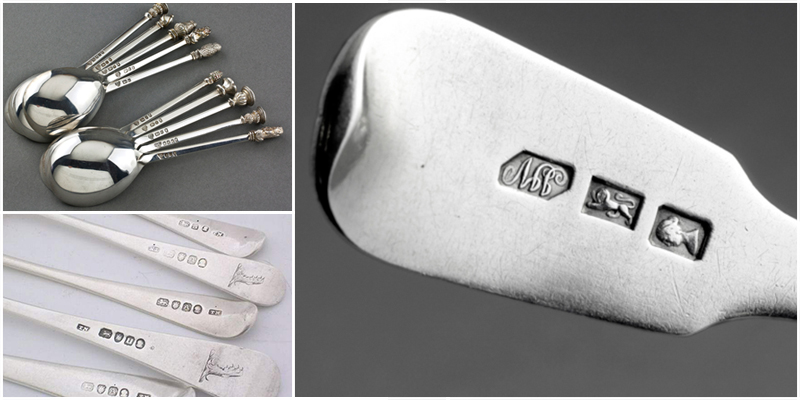Nowadays, silver’s applications in the world are beyond measure. But silver is not an inexhaustible resource. In recent years, mines have been unable to meet the current demand. To keep pace with the constant fluctuations of the supply and demand of the silver market, ‘old’ silver gets melted down and are used again.
This ‘old’ silver is known as scrap metal but doesn’t necessarily equate to worthless. Markings on antique silver dictate its value. You may be asking where can I look mine up and what do they mean?
Determining your Silver Markings Value

Some antique silver marks make the pieces or sets invaluable to collectors. Some of the most highly sought after markings are rare in nature and can bring thousands to tens of thousands of dollars at an auction. Other markings may be more common, with less of a demand in the collector’s world.
However, the demand for scrap silver may be higher and bring a higher payout. Here are the three main applications of silver in today’s global economy that influences the demand and value of scrap silver pieces:
1. Industry
Silver is used in many ways due to its unique properties of being durable, lustrous and conductor as well as corrosion resistant. It is commonly used in batteries, automobiles, switch panels, elevator buttons, traffic controls on railways, radiography, coins, bars, jewelries and more to improve operations and make human’s living much easier and smoother.
2. Investments
Silver is added to many portfolios as a way to diversify investments and capitalize on its enduring value as a precious metal. It can be invested in many ways, including tangible bullion, medallions and coins you can keep with you or by enrolling in accumulation plans based on stock values or trust accounts. When appraised by an expert will prove to be a valuable asset as an investment.
3. Jewelry and Décor
Jewelries and décor items has been produced with silvery metal and will continue to produce in coming generations. Craftsmanship is elegantly displayed and easy to showcase. It is also used in fine photography, your home’s insulation and even solar panel cells to reduce the carbon footprint of our generation. Jewels and decoration items are also the making of money through markings on silver objects.
As you can see, determining your silver markings value depends on a multitude of factors, not just the value established by a collector. Although that can be the most important one to keep in mind.
Where Can I Find Silver Markings?

Markings are mostly found on the underside or back side of the pieces so as to preserve the aesthetic quality of the craftsmanship. They may be found at the base of sculptures and candelabras or the handles of spoons and the back of platters. Coins may or may not have markings. Some are stamped with marks to denote sterling, but fraudulent markings are common with coins.
What do Silver Markings Mean & How to Know the Meaning?
The truth is that there are over 12,000 different silver markings, they all tell unique historical details. Professional appraisers will be able to tell you what they mean and what value they hold. Having your piece inspected will help you to determine the worth of your silver piece according to the market and what it is worth to you personally.











